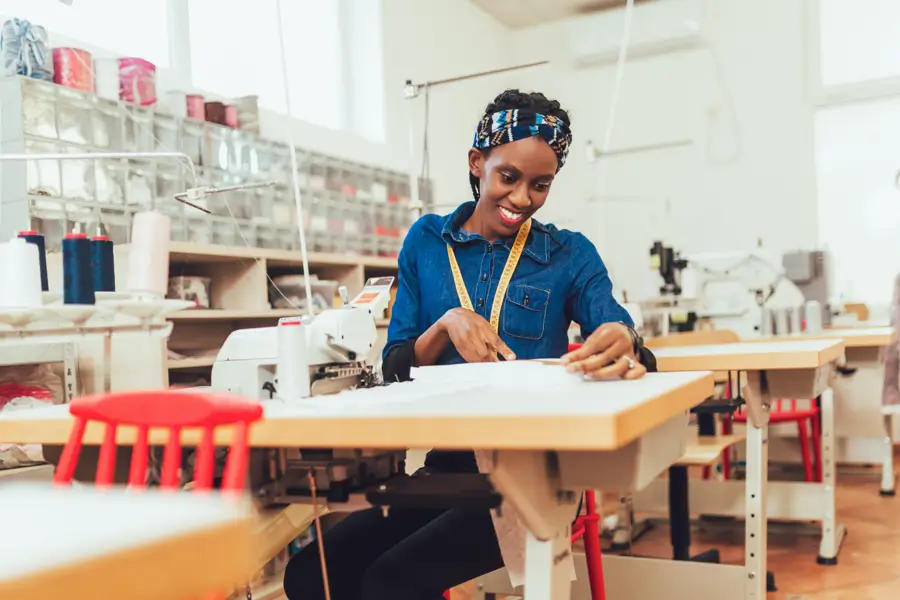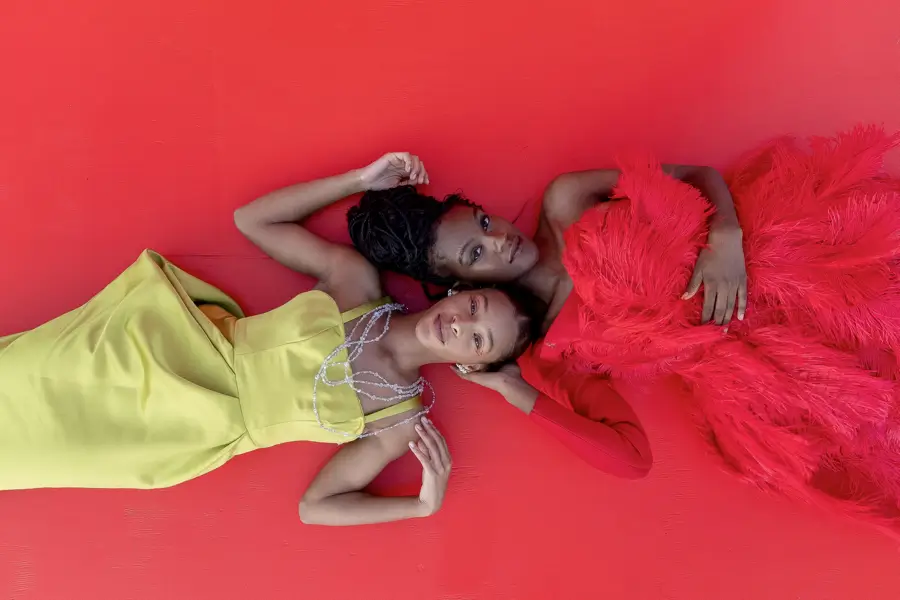
PROFESSIONAL DEVELOPMENT

Fashion photography is a captivating and dynamic field that plays a pivotal role in the fashion industry. It requires a unique set of skills, ranging from creative vision and technical expertise to effective communication and model direction.
In this guide, we will explore the essential aspects of fashion photography, from working with models to creating impactful images that leave a lasting impression.
Fashion photography is a key component of the fashion world, serving as the visual language that communicates the essence of fashion brands, designers, and trends. It involves capturing clothing, accessories, and fashion styles in a way that evokes emotions, tells stories, and inspires audiences.
As a fashion photographer, your work goes beyond merely showcasing garments; it helps create a brand’s identity, aesthetic, and overall image.
To excel in fashion photography, having the right equipment is crucial. A high-quality DSLR or mirrorless camera with interchangeable lenses provides the versatility needed for various fashion shoots.
Additionally, invest in a range of lenses, including wide-angle and portrait lenses, to achieve diverse compositions and perspectives.
Consider using prime lenses with wide apertures to create beautiful bokeh and achieve a shallow depth of field, drawing attention to specific elements in the frame.
Establishing a positive and professional rapport with fashion models is fundamental for successful fashion photography.
Building trust and rapport creates a comfortable atmosphere, allowing models to express themselves authentically and deliver compelling poses. A friendly and respectful demeanor will encourage models to feel at ease, which can significantly impact the overall quality of the images.
Remember that successful fashion photography is a collaborative effort, and the model’s comfort and confidence can make or break a photoshoot.
As a fashion photographer, clear and concise communication is vital in bringing your vision to life. Use simple and actionable instructions to guide models through poses, expressions, and movements.
Avoid using technical jargon and focus on expressing the emotions and moods you want to convey in the photographs. For instance, instead of saying, “Tilt your head to a 45-degree angle,” you can say, “Look dreamy and slightly tilt your head to the side.”
To make your directions more effective, show models the poses or movements you have in mind. This can be done by physically demonstrating the pose, using reference images, or providing a mood board with images that convey the desired style and atmosphere.
Remember that effective communication fosters trust and helps the model understand your vision, resulting in more authentic and emotive photographs.
Different fashion styles call for varying poses to complement the clothing and the overall concept. For elegant couture, consider graceful and fluid movements, while edgy streetwear might benefit from bold and dynamic poses. Understanding the essence of each fashion style will guide you in directing models appropriately.
In addition to understanding fashion styles, be attentive to the model’s body type, facial features, and body language. Posing should accentuate the model’s best features and flatter the garments they are wearing.
For instance, elongating the neck and extending the arms can create elegant lines and add sophistication to the images.
Lighting is the cornerstone of photography, and in fashion photography, it takes center stage. Understanding different lighting techniques and knowing how to manipulate light is essential for creating impactful images. Proper lighting can enhance textures, create dramatic shadows, and add depth to the photographs.
For fashion photography, natural light and artificial light each offer unique advantages. Natural light can be soft and flattering, perfect for outdoor shoots and achieving a natural look. Shooting during the golden hour (early morning or late afternoon) can create warm and enchanting images.
On the other hand, artificial lighting, such as studio strobes and continuous lights, allows for more control over the lighting setup and is ideal for indoor shoots.
Experiment with different lighting setups, modifiers, and angles to achieve the desired mood and style in your images. Backlighting, side lighting, and diffused lighting can all produce distinct effects.
Remember that the direction of light can dramatically impact the model’s features and the clothing’s texture, so take the time to experiment and find the most flattering lighting for each shot.
The background sets the stage for your fashion shots and can significantly influence the overall feel of the image. It should complement and not distract from the main subject.
Consider using simple backdrops, interesting architectural elements, or vibrant urban environments depending on the fashion concept.
For high-end fashion, a clean and uncluttered background can place the focus solely on the clothing and model. On the other hand, an urban street scene might add an edgy and dynamic element to streetwear fashion photography.
Be mindful of the colors and patterns in the background, ensuring they do not clash with the garments or overwhelm the composition.
When shooting outdoors, be aware of potential distractions or elements that might inadvertently draw attention away from the model. Position the model in front of visually appealing backdrops that enhance the theme of the photoshoot.
A well-chosen background can elevate the fashion story and add depth to the images.
Fashion photography allows for creative freedom in capturing unique angles and perspectives. Get down low, shoot from above, or use unconventional angles to add intrigue and drama to your images.
Explore different vantage points to present fashion in refreshing and unexpected ways.
Shooting from a low angle can make the model appear larger-than-life and add a sense of empowerment to the images. Conversely, shooting from a higher angle can elongate the model’s body and highlight the clothing’s lines and flow.
Experimenting with different angles and perspectives allows you to create images with diverse visual impact and storytelling potential.
Post-processing plays a pivotal role in refining your fashion photographs. Use photo editing software such as Adobe Lightroom or Photoshop to enhance colors, contrast, and sharpness. Retouching blemishes and imperfections can ensure a polished final image.
During the editing process, aim to maintain the natural look of the model and garments while enhancing the overall aesthetic. Adjust exposure and contrast to balance highlights and shadows, making sure that intricate details in the clothing are visible.
Fine-tune color temperature and white balance to achieve accurate and pleasing skin tones and color rendition.
When retouching models’ skin, take a subtle and selective approach. Retain skin texture and natural features while reducing distractions and minor imperfections.
Use tools like the Healing Brush and Clone Stamp to remove distractions and ensure the focus remains on the fashion.
Beyond basic adjustments, advanced post-production techniques can elevate your fashion images to a higher level of creativity and visual impact. Techniques like frequency separation for skin retouching, color grading, and dodging and burning can be used to fine-tune specific elements and create stunning, magazine-worthy images.
Frequency separation allows you to separate skin texture from skin tone, enabling precise retouching while preserving skin details. This technique ensures that the model’s skin appears flawless and natural without appearing overly edited.
Color grading involves manipulating color hues and tones to establish a specific mood or style in the images. By creating a consistent color palette, you can enhance the visual coherence of a fashion series and evoke specific emotions in the viewer.
Dodging and burning are essential techniques for sculpting light and shadow in your images. Use these techniques to enhance the model’s features, add dimension to the garments, and create a sense of depth and drama.
When used subtly and skillfully, these advanced post-processing techniques can elevate your fashion photography to a professional level.
As with any creative field, networking is crucial in establishing a successful career in fashion photography. Collaborate with models, stylists, makeup artists, and designers to build a diverse and impressive portfolio. Attend fashion events, workshops, and industry gatherings to connect with professionals in the field.
Additionally, consider working with aspiring models, as they are often more open to collaborating on creative projects and building their portfolios. A strong and varied portfolio will demonstrate your versatility and expertise, making it an essential tool for attracting clients and opportunities.
Fashion is ever-evolving, and staying updated with the latest trends and industry changes is essential for fashion photographers.
Follow fashion magazines, online publications, and industry influencers to remain in touch with the latest styles, themes, and concepts. Social media platforms like Instagram and Pinterest can be valuable sources of inspiration and information.
Attending fashion shows and exhibitions is an excellent way to observe emerging fashion trends and connect with potential clients. Being aware of the latest fashion developments will allow you to adapt your photography style and cater to the demands of the industry.
In conclusion, fashion photography is an art form that requires a blend of technical expertise, creativity, and interpersonal skills. Mastering the art of directing models, understanding lighting and composition, and honing post-processing techniques will enable you to create captivating and impactful images.
Building a successful career in fashion photography requires persistence, adaptability, and a deep passion for the world of fashion. By applying these tips and techniques, you can embark on a fulfilling journey in the exciting realm of fashion photography.

The Art Career Project is a trusted resource for emerging and professional artists.